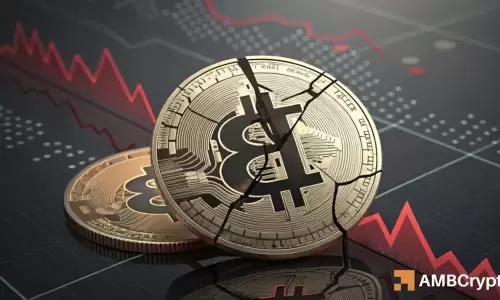 |
|
 |
|
 |
|
 |
|
 |
|
 |
|
 |
|
 |
|
 |
|
 |
|
 |
|
 |
|
 |
|
 |
|
 |
|
斯坦福大学的毕业生于2019年启动了PI网络,这是一个加密项目,试图使数字资金更轻松地通过手机“采矿”获得。

Stanford graduates launched the Pi Network in 2019 as a cryptocurrency project aiming to make digital money more accessible through “mining” on phones, circumventing the usual tech barriers that deter most people from mining crypto the traditional way.
斯坦福大学的毕业生于2019年启动了PI网络,是一个加密货币项目,旨在通过手机的“采矿”来使数字资金更容易获得,从而规避了通常的技术障碍,从而阻止了大多数人以传统方式挖掘加密货币。
We’ll break down what Pi Network is about, what it’s trying to achieve, and the technology behind it.
我们将分解PI网络的意义,它正在尝试实现的目标以及其背后的技术。
What Is Pi Network About?
什么是PI网络?
Pi Network sets out to enable anyone to mine cryptocurrency using a simple phone application, in contrast to coins like Bitcoin which require specialized, energy-intensive mining rigs. The goal is to build a system of digital money and smart contracts powered and secured by the people who use it, staying true to the core principles of blockchain technology.
PI网络着手使用简单的电话应用程序来使任何人都可以开采加密货币,这与需要专门的,能源密集型采矿装置的硬币等硬币相比。目的是建立一个由使用它的人驱动和确保的数字货币和智能合约系统,并忠于区块链技术的核心原则。
Their vision is to create a global, open system where individuals connect directly, engaging through referrals to bring in more users and foster a collective effort. In the beginning stages of mining, early participants mine more Pi, but the rate slows down as more people join, aiming to distribute the coins in a balanced manner.
他们的愿景是创建一个全球开放的系统,个人直接联系,通过推荐来吸引更多用户并促进集体努力。在采矿的开始阶段,早期参与者挖掘了更多的pi,但是随着越来越多的人加入,速度降低了,旨在以平衡的方式分发硬币。
Ultimately, Pi is envisioned to be used for everyday purchases, integration with other applications (DApps), and seamless money transfer between people.
最终,预计PI用于日常购买,与其他应用程序(DAPP)集成以及人与人之间的无缝汇款。
Their official mission statement is “to build a cryptocurrency and smart contracts platform secured and operated by everyday people.” They have a broader goal to “build the world’s most inclusive peer-to-peer ecosystem and online experience, fueled by Pi, the world’s most widely used cryptocurrency.”
他们的正式任务声明是“建立一个加密货币和智能合约平台,由日常人员确保和运营。”他们具有更广泛的目标,可以“建立世界上最广泛使用的加密货币PI的推动力,建立世界上最包容的对等生态系统和在线体验。”
What Is the Technology Behind Pi Network?
PI网络背后的技术是什么?
Pi Network employs a modified version of the Stellar Consensus Protocol (SCP) for transactions, originally developed by Stanford computer science professor David Mazières, also the chief scientist at the Stellar Development Foundation. This choice allows Pi to build a light-mining system on phones, designed for ease of use and minimal energy consumption.
PI Network使用Stanford计算机科学教授DavidMazières开发的恒星共识协议(SCP)的修改版本,也是Stellar Development Foundation的首席科学家。这种选择使PI可以在手机上建立轻型挖掘系统,该系统旨在易于使用和最少的能耗。
Instead of the computationally demanding ‘proof-of-work’ used by other cryptos, Pi’s variant of SCP relies on trusted computers (nodes) and groups called ‘security circles.’ You contribute to these security circles by adding people you trust to your network. In doing so, you help to verify transactions and strengthen the network’s overall security. As these personal security circles interlink, they form a global fabric of trust. This fabric aids the network in quickly and securely agreeing on transactions.
PI的SCP变体不取决于可信赖的计算机(节点)和称为“安全圈”的组。您通过将您信任的人添加到网络中来为这些安全界做出贡献。在此过程中,您有助于验证交易并加强网络的整体安全性。随着这些个人安全圈相互链接,它们形成了全球信任的结构。该面料有助于网络快速,安全地同意交易。
Now, ‘mining’ in the context of Pi Network isn’t done in the same way as other cryptocurrencies – you won’t be solving complex math problems or draining your phone’s battery. Instead, you mine Pi by simply opening the app once a day and tapping a button. They term this ‘proof of engagement,’ essentially verifying that you’re a real person and not a bot. This daily check-in is said to have a minimal impact on your phone’s battery or data usage. Through these check-ins and contributions to your security circle, you ultimately help keep the fabric of trust strong, which in turn protects the Pi ledger.
现在,在PI网络的背景下,“采矿”与其他加密货币的方式相同 - 您将不会解决复杂的数学问题或排干手机的电池。取而代之的是,您只需每天打开一次应用并点击按钮即可开采PI。他们称这种“参与证明”,从本质上验证了您是一个真实的人而不是机器人。据说每日签到对手机的电池或数据使用情况有很小的影响。通过这些检查和对您的安全圈的贡献,您最终帮助保持坚固的信任结构,从而保护Pi Ledger。
The network has different roles, and your role can influence how much Pi you mine:
该网络具有不同的角色,您的角色可以影响您挖掘多少PI:
* Pioneer: This is the basic user who mines Pi by logging in daily.
*先驱:这是通过每天登录的基本用户矿山。
* Contributor: You become a Contributor if you actively work to make the network safer by adding trusted people to your security circle.
*撰稿人:如果您积极努力通过将可信赖的人添加到您的安全圈中,则将成为贡献者。
* Ambassador: If you bring new people into the network by inviting them, you’re an Ambassador.
*大使:如果您通过邀请他们将新朋友带入网络,那么您就是大使。
* Node: Some individuals run the Pi Node software on their own computers. These nodes help decentralize and secure the network further by verifying transactions. For running a node, you can earn additional Pi, depending on factors like how long your computer stays on and its processing power.
*节点:有些人在自己的计算机上运行PI节点软件。这些节点通过验证交易来帮助分散并确保网络的确保。对于运行节点,您可以根据计算机持续多长时间及其处理能力等因素而获得其他PI。
What Are the Stages of Pi Network?
PI网络的阶段是什么?
Pi Network has been rolling out in phases:
PI网络一直在阶段推出:
* Phase 1: Beta (December 2018 – March 2020): The phone app launched, allowing the first ‘Pioneers’ to begin mining Pi and expanding the community. The first version of their plan (whitepaper) was released on March 14, 2019.
*第1阶段:Beta(2018年12月至2020年3月):启动了电话应用程序,允许第一个“先驱者”开始挖掘PI并扩大社区。他们的计划的第一个版本(白皮书)于2019年3月14日发布。
* Phase 2: Testnet (March 2020 – December 2021): They launched a live Testnet with nodes in multiple locations around the world to test the stability, speed, and scalability of their blockchain. Developers could also start building apps on this test version of the chain.
*第2阶段:Testnet(2020年3月 - 2021年12月):他们在世界各地的多个位置发射了一个带有节点的实时测试网,以测试其区块链的稳定性,速度和可扩展性。开发人员还可以在此测试版本的链条上构建应用程序。
* Phase 3: Enclosed Mainnet (December 2021 – Early 2025): The main network (Mainnet) went live, but it was still walled off, unable to connect to outside systems without permission. The main goals during this time were to get Pioneers through Know Your Customer (KYC) checks and transfer their mined Pi to the Mainnet blockchain. Inside this closed system, people could use Pi for transactions in Pi apps or choose to lock up Pi for faster mining. The team was focused on fostering more app development and use cases within the Pi ecosystem. By early 2025
*第3阶段:封闭的主网(2021年12月 - 2025年初):主网络(mainnet)上线,但仍被围困,未经许可就无法连接到外部系统。这段时间的主要目标是通过了解您的客户(KYC)检查并将其开采的PI转移到主网区块链中。在此封闭的系统中,人们可以在PI应用程序中使用PI进行交易,或者选择锁定PI以进行更快的采矿。该团队专注于在PI生态系统中促进更多的应用程序开发和用例。到2025年初
免责声明:info@kdj.com
所提供的信息并非交易建议。根据本文提供的信息进行的任何投资,kdj.com不承担任何责任。加密货币具有高波动性,强烈建议您深入研究后,谨慎投资!
如您认为本网站上使用的内容侵犯了您的版权,请立即联系我们(info@kdj.com),我们将及时删除。
-

-

-

-

-

-

- UNISWAP价格预测:看涨逆转在地平线上?
- 2025-08-05 07:10:59
- UNISWAP(UNI)是否准备好看好逆转?最近的市场分析表明潜在的上升性,但是哪些因素驱动了这种乐观的前景?
-

- 比特币,以太坊,Altcoin Rally:这是最大的吗?
- 2025-08-05 07:01:56
- 加密货币市场正在加热,以太坊领导了这一指控。这是主要的Altcoin集会的开始吗?让我们研究最新的趋势和见解。
-

-

- 比特币持有人准备在看跌信号的市场出口
- 2025-08-05 07:00:39
- 长期比特币持有者显示出市场退出的迹象,作为关键指标闪光灯信号,表明尽管价格提高,但仍有可能进行更正。





























































